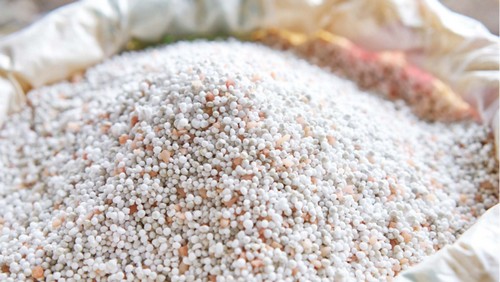Managing sustainably soil health: AGRA seeks to up-scale fertilizer use and integrated soil fertility management technologies.
Mineral fertilizers have been described as the “fuel” that powers Green Revolutions, according to Nobel Peace Prize Laureate Dr. Norman Borlaug. And to that effect and based on the commitments by African Union, AGRA seeks to up-scale the use of fertilizers to transform agriculture in its 11 focus countries across Africa. In addition, AGRA moves to disseminate the Integrated Soil Fertility Management Technologies (ISFM) for smallholder farmers’ resilience and healthy soils for healthy food systems.
Despite the fact that organic fertilizers play an important role in raising soil fertility, it is important to note that supply of livestock manure is insufficient to make up the deficit to support soil fertility across Africa. Under normal circumstances, a cow produces approximately 15 kg of nitrogen in manure each year, while a maize crop with a target yield of 3 MT/ha requires approximately 100 kg of N/ha. It is therefore not possible to expect Africa to produce the food it needs by relying solely on organic manure.
It is on record that after the Africa Fertilizer Summit in 2006, fertilizer usage on the continent has doubled, to an average of 17 kg/ha, and as a result, yields have improved exponentially. However, this remains way below the target of 50 kg/ha agreed upon by the African Heads of State at the Summit.
And now, AGRA seeks to build on the progress achieved so far, to improve the fertilizer uptake for the benefit of the 30 million smallholders in the target countries. Special attention will be given to women’s access to fertilizers to help reduce inequalities. To achieve this, and based on an assessment study, AGRA seeks to invest in the fertilizer systems, from production to farmers’ awareness creation.
Fertilizer usage on the continent has doubled, to an average of 17 kg/ha, and as a result, yields have improved exponentially.
1
AGRA will invest in research for soil testing and mapping so as to create balanced fertilizers that respond to specific soil needs in particular agro-ecological zones. After this, suitable fertilizers will be recommended for those particular zones. During this exercise, attention will also be given to acidic soils where liming is recommended. Soil mapping and testing will be done in close collaboration with National Agricultural Research Institutions (NARS).
2
The second step will be to develop new fertilizer blends. It has been proven that substantial yield increases for almost all crops can be achieved in Africa by blending secondary macronutrients and micronutrients into standard fertilizers. The development of blended fertilizers will be guided by information obtained from soil maps to target the right fertilizer and application rates to a particular crop and location. This is crucial for improving the efficiency of fertilizer use and for preventing negative environmental consequences.
3
Formulated fertilizer blends will then be validated through crop response and missing element trials to establish their agronomic and economic efficiencies. This work will be carried out by teams of public soil scientists working side-by-side with private fertilizer companies.
4
The final step after fertilizer blending will be creation of awareness. In line with what AGRA has traditionally done, the awareness creation will be done through farmer field days, on-farm demo’s, and radio messaging. AGRA will also use Village-Based Advisors (VBA) linked to nearby agro-dealers, distribution of small, sample packs of inputs from interested local suppliers, and use of selected information and communication and technology (ICT) applications which inform and orient farmers on inputs and improved farming practices.
5
AGRA will also support input suppliers and distributors to design and implement effective farmer education campaigns; and lastly work with interested off-takers in the private sector to increase farmer awareness of quality requirements and input use.
6
To also improve the appropriate fertilizers uptake, AGRA will support the Governments in improving their subsidy programs by using the blended fertilizers, thus increasing the return on investments of smallholder farmers.

Achievements
AGRA has achieved a lot under its previous strategy in terms of implementing ISFM technologies and creating awareness around it. Out of the 5.91 million farmers reached from 2007 to end of September 2019, about 2.26 million are using these technologies to double crop yields on about 1.81 million hectares of land. About 40% of them are women.
AGRA seeks to continue building on this and disseminating these technologies for soil health management and building resilience.









